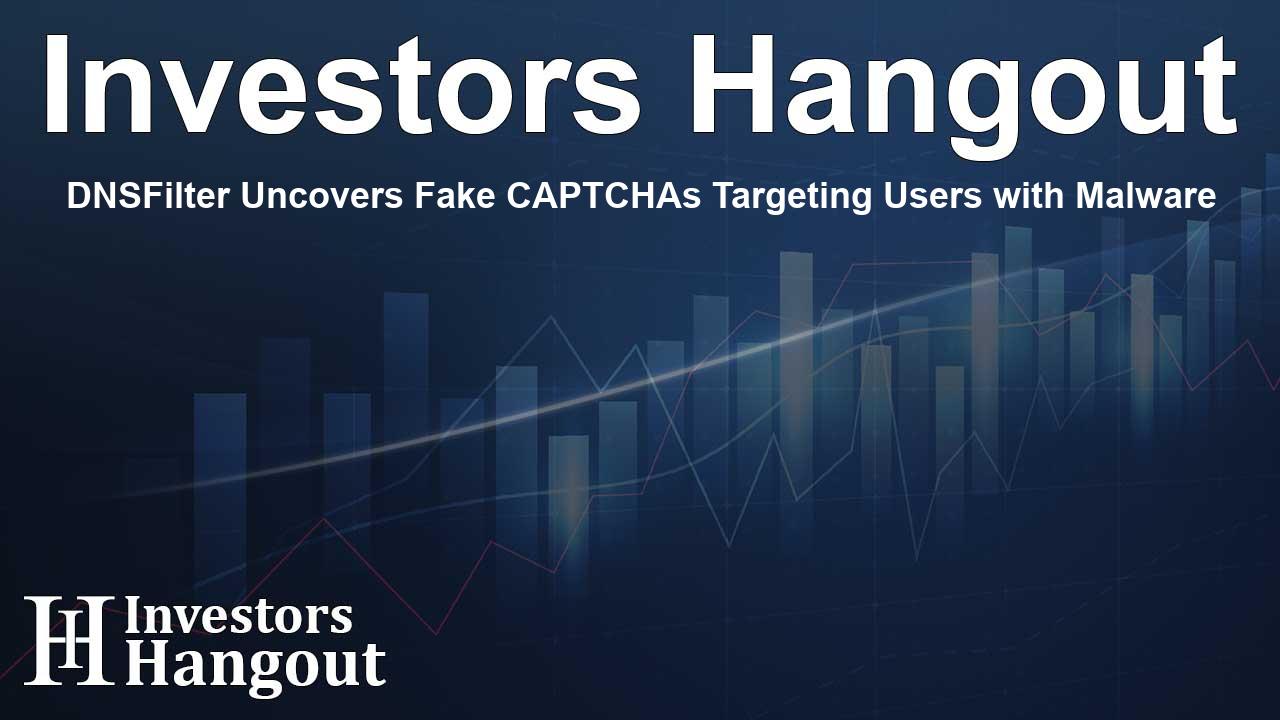DNSFilter Uncovers Fake CAPTCHAs Targeting Users with Malware

Understanding the Threat of Fake CAPTCHAs
In the ever-evolving world of cybersecurity, threats can come from unexpected sources. Recent research has shed light on a new tactic being employed by cybercriminals: fake CAPTCHAs. These deceptive pages not only appear innocuous but are designed to manipulate users into handing over sensitive information or facilitating malware attacks.
The Discovery of Malicious Activity
DNSFilter, a leader in protective DNS services, recently reported that a customer from their managed service provider network encountered a situation that is becoming all too common. Initially, what seemed to be a standard CAPTCHA prompt turned out to be a front for malware delivery, specifically a fileless malware variant known as Lumma Stealer. Thankfully, DNSFilter’s robust content filtering system intercepted the threat before it could do any harm.
Details on the Fake CAPTCHA Incidents
Those investigating this incident were alarmed by some key findings:
Interactions on the DNSFilter Network
In a short span of just three days, the malicious CAPTCHA was engaged with 23 times. Alarmingly, 17% of users who encountered it proceeded to interact with the prompt, inadvertently facilitating the attempted delivery of malware. This highlights the effectiveness of cybercriminals in exploiting human curiosity.
Origins of the Fake CAPTCHAs
The initial detection of this malicious CAPTCHA occurred on a site associated with a Greek bank. It soon became clear that this was not an isolated event; two additional domains were linked to this fraudulent activity. One of the sites, a new Cloudflare Pages site, generated errors upon clicking the typical “I’m not a robot” checkbox, while another, Recaptcha-manual.shop, executed commands outside the user’s browser window, further indicating its questionable nature.
Staying Safe in the Digital Landscape
As malicious tactics continue to evolve, users must maintain a vigilant mindset. If an online prompt appears suspicious, it's crucial to avoid engaging with it. However, it's essential to remember that threats may not always be obvious. Organizations should prioritize ongoing cybersecurity training for their employees and develop comprehensive strategies to block dubious domains. Utilizing technologies such as content filtering can help mitigate the risk of malware infiltration and phishing attacks.
Protective Measures Against Threats
Vigilance is paramount in today’s digital landscape. Will Strafach, Senior Director of Security Intelligence & Solutions at DNSFilter, emphasized the necessity for users to critically assess any links or prompts they encounter. He noted, "Human error is inevitable, which is why modern enterprises require protective DNS. Our solutions identify new and emerging threats, granting cybersecurity teams the visibility needed to secure their networks effectively, regardless of their employees' locations."
About DNSFilter
DNSFilter is a pioneer in the field of cybersecurity, offering AI-powered content filtering that proactively safeguards users from online threats. Their approach enables organizations to block threats up to ten days faster than other solutions, ensuring a higher level of protection. As office dynamics shift and more employees work from various locations, DNSFilter's solution adapts by securing connections on public Wi-Fi networks and beyond. With a deployment time measured in minutes rather than days, DNSFilter is trusted by over 43,000 organizations globally. Learn more about their innovative approach to cybersecurity at their official site.
Frequently Asked Questions
What are fake CAPTCHAs?
Fake CAPTCHAs are deceptive prompts that mislead users, often leading them to unknowingly facilitate malware delivery or disclose personal information.
How can organizations protect against fake CAPTCHAs?
Organizations should implement regular cybersecurity training and utilize content filtering solutions to help block malicious sites and prevent phishing attempts.
What is Lumma Stealer?
Lumma Stealer is a type of fileless malware designed to extract sensitive information from compromised systems without traditional malware signatures.
How common are these types of attacks?
Such attacks are increasingly common, with cybercriminals continuously adapting their strategies to exploit unsuspecting users.
Why is protective DNS important?
Protective DNS provides an essential layer of defense by monitoring and blocking malicious domains, enhancing overall network security and visibility.
About The Author
Contact Kelly Martin privately here. Or send an email with ATTN: Kelly Martin as the subject to contact@investorshangout.com.
About Investors Hangout
Investors Hangout is a leading online stock forum for financial discussion and learning, offering a wide range of free tools and resources. It draws in traders of all levels, who exchange market knowledge, investigate trading tactics, and keep an eye on industry developments in real time. Featuring financial articles, stock message boards, quotes, charts, company profiles, and live news updates. Through cooperative learning and a wealth of informational resources, it helps users from novices creating their first portfolios to experts honing their techniques. Join Investors Hangout today: https://investorshangout.com/
The content of this article is based on factual, publicly available information and does not represent legal, financial, or investment advice. Investors Hangout does not offer financial advice, and the author is not a licensed financial advisor. Consult a qualified advisor before making any financial or investment decisions based on this article. This article should not be considered advice to purchase, sell, or hold any securities or other investments. If any of the material provided here is inaccurate, please contact us for corrections.
